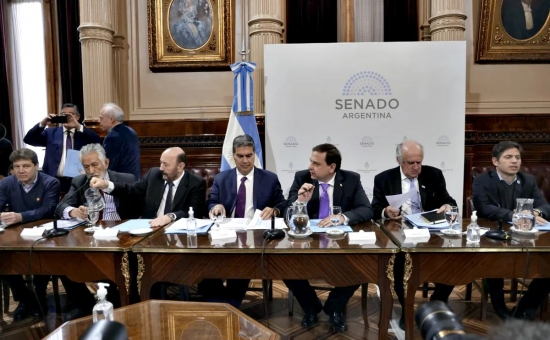Argentina (University of San Andrés) The Siege of the Supreme Court

Criticism and attacks on the Judiciary in general and the Supreme Court in particular have been a constant in our country in recent years. That obsession with eroding what Alexander Hamilton considered the weakest of the three powers has been exacerbated since the end of last year. Proof of this is the constant criticism from the Executive Power and the recent bills presented by some senators that seek to multiply by 3 or 4 the number of members of the Supreme Court. This critical impulse came hand in hand with the indignation expressed by the government of the day at the December 2021 Court ruling in the case “Bar Association of the City of Buenos Aires v. National state”. In that ruling, the Court declared the unconstitutionality of certain articles of Law 26.
The Court’s ruling was described as an “institutional coup.” The “coup” in question would have been the effect of the declaration of unconstitutionality provided for in the majority vote in that case, which allowed (supposedly) to “revive” a repealed law. As a consequence of the criticized ruling, the Council of the Judiciary left behind the unconstitutional integration of 13 members ordered by Law 26,080 (in which the political sector predominated); and returned to one of 20 members with a certain balance between the representatives of the political sector, of the judges and of those of the lawyers of the federal registration. That previous integration arranged by Congress in Law 24,937 granted the presidency of the Judicial Council to the president of the Court. The judicial conspiracy denounced, then, would have been to strike down a law (26.
In this case, the thick ammunition used by the critics was provided by the partial dissenting vote of Judge Ricardo Lorenzetti. Although they agreed with the majority insofar as the integration of the Council ordered in Law 26,080 was unconstitutional (which, conveniently, is silenced), the dissidents questioned the provision as a remedy for the previous regime to regain its validity. In that vote, it was affirmed, in a categorical manner, that “[a] repealed law cannot be reinstated in its force and that is what is taught in the first courses of the Faculties of Law.” To substantiate its peculiar position, the dissenting vote appealed to the authority of a famous European jurist, Hans Kelsen, as well as various examples of comparative law, including Spanish and American. He even stated, categorically, that there were no precedents for a similar solution either in Argentine law or in the United States, a country from which our constituents took the model of judicial control of constitutionality. Finally, the dissidence denounced that the majority vote “seeks to repeal a law and revive a repealed one, which is clearly contrary to the legal system” and that this “contradicts the basic principles of law, which cannot be ignored by the magistrates” .
Instead of analyzing whether the grounds for Judge Lorenzetti’s partial dissidence were correct or not, the political ruling party limited itself to repeating them ad nauseam: “what happened is something illegal and unconstitutional where the sphere of the Legislative Power is invaded, something prohibited.” by the Constitution”; the Court “extorts” Congress with its sentence; “This ruling is as shameful as it is inapplicable”; etc. The Secretary of Justice of the Nation and former judge Eugenio Zaffaroni even raised the possibility of initiating a political trial against three judges of the Court for poor performance of their duties due to the content of that judicial decision.
The unusual thing about the case is that an in-depth study of the subject shows that:
- Hans Kelsen not only wrote in favor of solutions similar to the one ordered by the majority on more than one occasion, but he applied that solution in his act as judge of the Austrian Constitutional Court in a case in 1922.
- In the United States, the declaration of unconstitutionality of a law that repeals, modifies or replaces another law normally has the effect of restoring the force of the repealed law.
- In that country there are dozens of precedents, both at the state level and at the federal level, which provided for the reestablishment of the validity of norms repealed, modified or replaced by others declared unconstitutional in the most diverse contexts.
- For more than 150 years, US courts have granted that effect to the declaration of unconstitutionality of laws that repeal other laws.
- That is the solution adopted in several European countries, including Germany, Austria, Bulgaria, Spain, Italy, Portugal, etc.
- Exactly the same thing happens in Latin America.
- The Argentine Supreme Court has cases in which it applied exactly the same criteria and which were signed by the dissident himself.
In other words, the dissenting vote is as strong as it is wrong.
Supreme Court justices are obviously not infallible. However, the decision adopted by the majority in the case of the Judicial Council is not only logical and rational, but it is imposed by our constitutional system and its foreign antecedents, especially its American model. The criticism to which the ruling was subjected by members of Congress and officials dependent on the Executive, on the other hand, is unfounded and totally disproportionate and unjustified. Greater restraint and prudence on the part of our representatives would be desirable or that they at least seriously study what they intend to question with such virulence and indignation. Our history is full of painful lessons that force us to conclude that institutions cannot be played with in this way.
